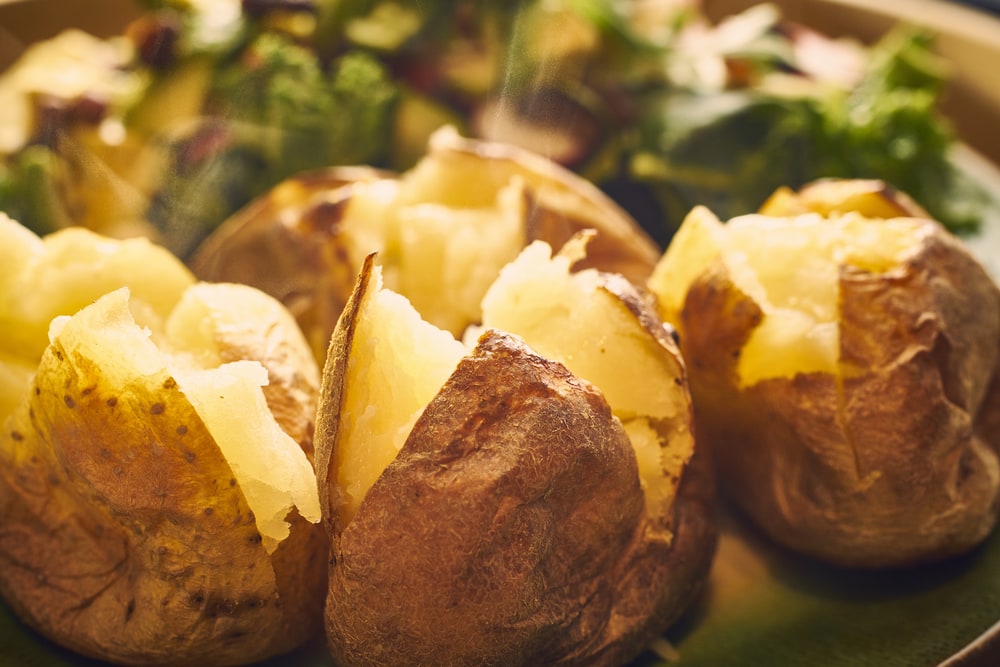Headaches are the worst. In 2021, the American Migraine Foundation reported that over 39 million Americans deal with migraines every day. The number is probably higher because not everyone goes to the doctor. Either way, you know that a bad headache can derail your day if you’ve suffered from any type of headache, whether tension, sinus, or the dreaded migraine. And while there are tons of medications on the market to help with headaches at the moment, they may have side effects or be something you don’t want to take. Nevertheless, you’re in luck! We’ve put together a list of 25 foods and supplements that can help reduce headache symptoms and even prevent headaches altogether. Keep reading to find out exactly how nutrition can help make your headache problems disappear.

25. Baked Potatoes
We know this might not be the first thing you think of when you have a headache, but it’s true, especially if it comes from alcohol consumption. Potatoes have high amounts of water and potassium, which are vital to your body’s function. Alcohol is a diuretic, which means that you lose water and crucial electrolytes through excess urination. If you’re dehydrated or low on potassium, eating a baked potato can put you on the path to recovery.
We recommend prepping your potato ahead of time if you can. Bake potatoes before you go out, then toss them in the microwave the next day for an easy pick-me-up. You could even pair your baked potato with other headache-fighting foods on this list, like mushrooms, spinach, or avocado. Continue reading to discover more foods and supplements that will provide natural headache relief.
